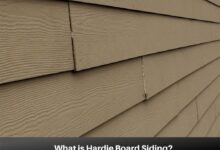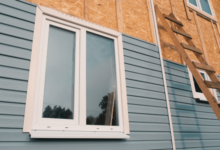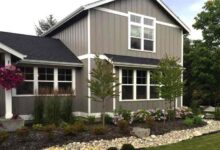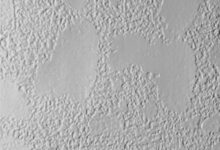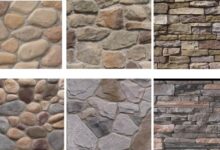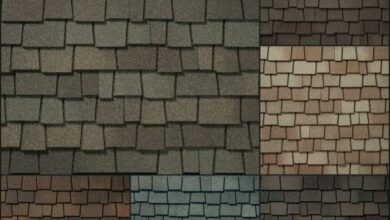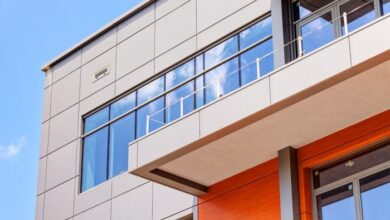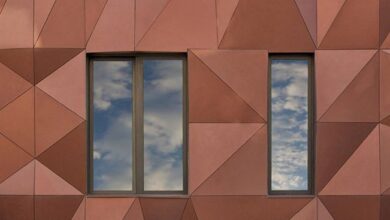Everlog Siding A Complete Guide
Everlog siding: It’s a name whispered among homeowners seeking durable, attractive, and low-maintenance exterior cladding. But what exactly *is* Everlog siding, and is it the right choice for your home? This comprehensive guide dives deep into everything you need to know, from its manufacturing process and aesthetic versatility to installation tips, cost analysis, and environmental impact. We’ll even compare it to other popular siding materials to help you make an informed decision.
Prepare to uncover the secrets behind Everlog siding’s enduring popularity and discover if it’s the perfect solution to elevate your home’s curb appeal and long-term value. We’ll cover everything from choosing the right style and color to understanding the intricacies of installation and maintenance, ensuring you’re fully equipped to make the best choice for your property.
Everlog Siding
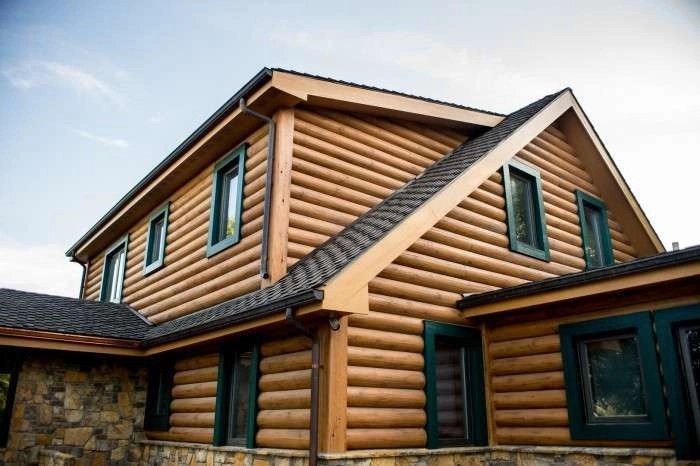
Everlog siding offers a durable and attractive alternative to traditional siding materials. Its unique manufacturing process and diverse range of styles make it a compelling choice for homeowners seeking a low-maintenance, aesthetically pleasing exterior. This detailed overview explores the product’s key features, manufacturing, and compares it to other popular options.
Everlog Siding Manufacturing Process
Everlog siding is typically manufactured using a high-pressure extrusion process. This involves melting and mixing high-density polyethylene (HDPE) resin with pigments and other additives to achieve the desired color and texture. The molten mixture is then forced through a die, shaping it into the desired profile of the siding. After extrusion, the siding undergoes a cooling process to solidify its shape. Finally, it is cut to length and packaged for distribution. The specific additives used can influence the final product’s durability, UV resistance, and colorfastness. Precision in the extrusion process ensures consistent quality and dimensional accuracy across all pieces of siding.
Everlog Siding Types and Styles
Everlog siding comes in a variety of profiles and colors to complement different architectural styles. Common profiles include clapboard, shingle, and vertical styles, mimicking the appearance of traditional wood siding. Color options range from classic neutrals to bold shades, offering homeowners a wide array of choices to match their personal preferences and home’s design. Certain manufacturers may offer textured finishes to further enhance the realism and visual appeal, such as wood grain patterns. The availability of specific profiles and colors may vary depending on the manufacturer and regional availability.
Everlog Siding Compared to Other Materials
Choosing the right siding material involves weighing several factors. Here’s a comparison of Everlog siding with popular alternatives:
| Feature | Everlog Siding | Vinyl Siding | Wood Siding | Fiber Cement Siding |
|---|---|---|---|---|
| Price | Mid-range | Low | High | Mid-to-High |
| Durability | High; resistant to impact, rot, and insects | Moderate; susceptible to impact damage | Moderate; susceptible to rot, insects, and weather damage | High; resistant to rot, insects, and fire |
| Maintenance | Low; requires occasional cleaning | Low; requires occasional cleaning | High; requires regular painting and maintenance | Low; requires occasional cleaning |
| Aesthetics | Versatile; available in various profiles and colors | Versatile; available in various profiles and colors | Classic and natural look | Clean and modern look; can mimic wood grain |
Everlog Siding
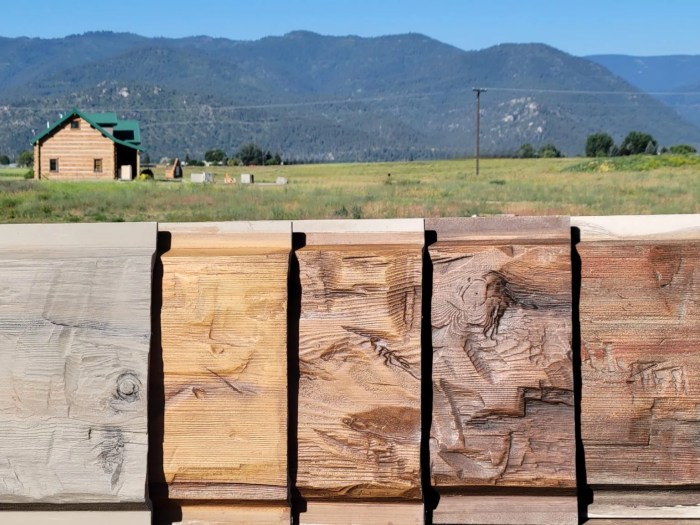
Everlog siding offers a durable and attractive exterior cladding solution for homes. Its low-maintenance nature and aesthetic appeal make it a popular choice among homeowners. Understanding the installation process and proper maintenance techniques is crucial to maximizing the lifespan and beauty of your Everlog siding investment.
Everlog Siding Installation
Proper installation is paramount to ensuring the longevity and performance of your Everlog siding. A poorly installed system can lead to premature damage, water intrusion, and costly repairs. Following these steps will help ensure a successful installation.
- Preparation: Begin by thoroughly preparing the surface. This includes removing any existing siding, repairing damaged sheathing, and ensuring a level and plumb surface. Proper preparation is the foundation of a successful installation. Any irregularities in the underlying structure will be reflected in the final appearance of the siding.
- Flashing and Water Management: Install flashing around windows, doors, and other penetrations to prevent water from entering the wall system. Proper flashing is critical for preventing water damage, a common cause of siding failure.
- Starter Strip Installation: Install the starter strip at the bottom of the wall, providing a level and consistent base for the rest of the siding. This ensures a neat and aligned finished product.
- Siding Panel Installation: Install siding panels, overlapping each panel according to the manufacturer’s specifications. Maintain consistent spacing and alignment for a professional look. Use appropriate fasteners to secure the panels without over-tightening.
- J-Channel and Trim Installation: Install J-channel and trim pieces around windows, doors, and corners. This provides a neat finish and protects the edges of the siding from damage.
- Final Inspection: Conduct a thorough inspection to ensure all panels are securely fastened, properly aligned, and free from damage. Address any issues before completing the project.
Everlog Siding Maintenance
Regular maintenance is essential to preserving the beauty and functionality of your Everlog siding. A proactive approach can prevent costly repairs and extend the life of your siding significantly.
- Regular Cleaning: Clean your siding at least once a year using a mild detergent and water. A pressure washer can be used, but care should be taken to avoid damaging the siding. High-pressure water can damage the siding’s finish or even dislodge panels.
- Inspection for Damage: Regularly inspect your siding for any signs of damage, such as cracks, dents, or loose panels. Addressing minor issues promptly can prevent them from becoming major problems.
- Caulk Repair: Inspect and repair any damaged caulking around windows, doors, and other penetrations. Proper caulking prevents water intrusion, a major cause of siding damage.
- Trim Maintenance: Maintain the trim around your siding, repainting or replacing as needed. Properly maintained trim complements the siding and protects it from damage.
Common Everlog Siding Installation Problems and Solutions
While Everlog siding is relatively easy to install, certain problems can arise. Being prepared for these potential issues can save time and money.
- Uneven Surfaces: Uneven surfaces can lead to difficulties in installing the siding properly. Solution: Address any underlying surface irregularities before starting the installation. This may involve shimming or replacing damaged sheathing.
- Improper Flashing: Inadequate flashing can result in water damage. Solution: Ensure proper flashing is installed around all windows, doors, and other penetrations. Use high-quality flashing materials.
- Over-Tightening Fasteners: Over-tightening fasteners can damage the siding. Solution: Use the recommended fasteners and avoid over-tightening. Use a consistent pressure when fastening.
- Incorrect Panel Overlap: Incorrect panel overlap can compromise the weather resistance of the siding. Solution: Adhere strictly to the manufacturer’s specifications for panel overlap. This ensures proper water shedding.
Everlog Siding
Everlog siding offers a compelling blend of durability and aesthetic appeal, making it a popular choice for homeowners seeking to enhance their curb appeal and property value. Its versatility allows for seamless integration into a wide range of architectural styles, providing a modern update or a classic, timeless look, depending on the chosen color and installation method. This detailed exploration will delve into the design and aesthetic possibilities of Everlog siding.
Everlog Siding’s Contribution to Curb Appeal
Everlog siding significantly enhances a home’s curb appeal by providing a clean, consistent, and visually appealing exterior. Its smooth surface and consistent color offer a modern aesthetic, while its ability to mimic the look of natural wood provides a classic, warm feel. The durability of Everlog siding ensures the enhanced curb appeal lasts for years, reducing the need for frequent maintenance and repainting. This long-term visual appeal translates directly into increased property value and a more inviting home exterior.
Examples of Everlog Siding in Different Architectural Styles
Everlog siding adapts well to various architectural styles. For example, a craftsman-style home could benefit from Everlog siding in a rich, dark brown, complemented by exposed beams and stone accents. A modern farmhouse design might utilize a lighter gray or white Everlog siding, paired with black windows and a contrasting metal roof. Even a traditional colonial home can be updated with Everlog siding, choosing a classic white or cream color to maintain the home’s historical charm while providing low-maintenance siding. The adaptability of Everlog siding allows homeowners to maintain the integrity of their home’s style while enjoying the benefits of modern siding technology.
House Facade Designs Featuring Everlog Siding
Below are three distinct house facade designs showcasing the versatility of Everlog siding:
- Design 1: Modern Minimalist. This design features a sleek, two-story home clad in a light gray Everlog siding. The clean lines are emphasized by dark gray trim around the windows and doors, creating a striking contrast. A flat, gray metal roof completes the minimalist aesthetic. The overall impression is one of sophisticated simplicity and contemporary elegance.
- Design 2: Rustic Farmhouse. This design utilizes a warm, medium brown Everlog siding, evoking the feel of natural wood. The siding is complemented by white trim around the windows and a slightly darker brown gable roof. A stone foundation and strategically placed landscaping, including flowering bushes and climbing vines, further enhance the rustic charm. This design creates a welcoming and inviting atmosphere.
- Design 3: Coastal Cottage. This design showcases a charming coastal cottage style with white Everlog siding. The white siding is accented by blue shutters and a gray shingle roof. The overall effect is bright, airy, and reminiscent of classic seaside homes. Adding a wraparound porch with white railings completes the coastal aesthetic.
Complementary Exterior Design Elements for Everlog Siding
Choosing the right complementary exterior elements is crucial to maximizing the aesthetic impact of Everlog siding. Careful consideration should be given to roofing materials, trim colors, and landscaping choices.
Here are some complementary elements:
- Roofing: Metal roofing (standing seam or corrugated) provides a modern, sleek contrast to Everlog siding. Asphalt shingles in earth tones or darker shades can also complement Everlog siding, depending on the chosen color.
- Trim: Contrasting trim colors can highlight architectural details. Darker trim against lighter siding or vice-versa creates visual interest. White or black trim are versatile options that work with most Everlog siding colors.
- Landscaping: Landscaping choices should complement the overall style of the home. For a modern look, consider clean lines and minimal plantings. Rustic designs benefit from more natural landscaping, including flowering shrubs and stone pathways.
Everlog Siding
Everlog siding, a popular choice for homeowners seeking a blend of durability and aesthetics, presents a significant investment. Understanding the cost factors and long-term value is crucial for making an informed decision. This section delves into the financial aspects of Everlog siding, comparing its lifecycle cost to other siding options to help you determine if it’s the right choice for your home.
Everlog Siding Cost Breakdown
The total cost of Everlog siding installation is influenced by several key factors. Material costs vary depending on the chosen style, color, and quantity needed. Labor costs depend on the complexity of the installation, the size of your home, and regional labor rates. Finally, additional expenses might include permits, waste disposal, and any necessary repairs to existing siding before installation. A detailed estimate should be obtained from a reputable contractor, considering all these variables. For example, a 2,000 square foot home might see material costs ranging from $8,000 to $16,000, while labor could add another $4,000 to $8,000, resulting in a total cost between $12,000 and $24,000. These are estimates and actual costs may vary significantly.
Long-Term Value and Return on Investment
Everlog siding boasts a long lifespan, often exceeding 50 years with proper maintenance. This longevity translates to a significant return on investment over time. Compared to siding options requiring more frequent replacements, like vinyl or wood, Everlog siding’s extended lifespan minimizes the need for costly repairs and replacements. The increased curb appeal and potential rise in home value also contribute to its long-term value. For instance, a home with newly installed Everlog siding might command a higher selling price than a comparable home with older, deteriorated siding.
Lifecycle Cost Comparison
The lifecycle cost considers the initial investment, maintenance expenses, and the eventual replacement cost over the siding’s lifespan. This allows for a more comprehensive comparison between different siding options. The following table illustrates a hypothetical comparison, showcasing how Everlog siding might stack up against other materials. Remember that these are estimates and actual costs can fluctuate based on location and specific circumstances.
| Siding Type | Initial Cost (Estimate) | Average Lifespan (Years) | Estimated Lifecycle Cost (per year) |
|---|---|---|---|
| Everlog Siding | $15,000 | 50 | $300 |
| Vinyl Siding | $8,000 | 20 | $400 |
| Wood Siding | $12,000 | 30 | $400 |
| Fiber Cement Siding | $10,000 | 30 | $333 |
Everlog Siding
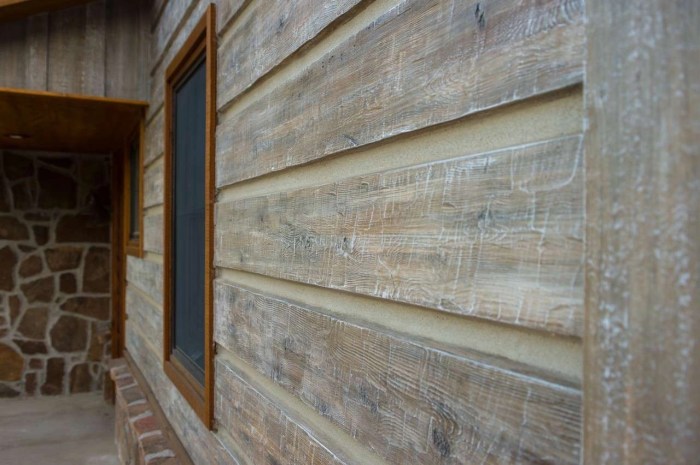
Everlog siding, a popular choice for homeowners seeking a durable and aesthetically pleasing exterior, also presents considerations regarding its environmental impact. Understanding the lifecycle of this material – from manufacturing to disposal – is crucial for making informed decisions about sustainable building practices. This section will examine the environmental footprint of Everlog siding, comparing it to alternatives and exploring its sustainability features.
Everlog Siding Manufacturing and Disposal
The manufacturing process of Everlog siding, like many building materials, consumes energy and resources. The extraction and processing of raw materials, such as wood fiber and polymers, contribute to greenhouse gas emissions. Furthermore, the manufacturing process itself involves energy-intensive steps, potentially resulting in air and water pollution depending on the specific methods employed. Disposal of Everlog siding at the end of its lifespan also presents an environmental challenge. While some components might be recyclable, the disposal process often contributes to landfill waste. The exact environmental impact will depend on factors such as the specific composition of the siding, the energy sources used in manufacturing, and the efficiency of the disposal methods. For instance, a siding with a higher percentage of recycled content would generally have a smaller environmental footprint than one made entirely from virgin materials.
Sustainability Aspects of Everlog Siding
While the manufacturing and disposal of Everlog siding present environmental challenges, some manufacturers are incorporating sustainable practices to mitigate these impacts. The use of recycled content in the production of Everlog siding reduces the demand for virgin materials, thereby lowering the overall environmental burden. Furthermore, some manufacturers employ eco-friendly manufacturing processes, such as minimizing energy consumption and reducing waste generation. These initiatives aim to decrease the carbon footprint associated with the production and distribution of the siding. For example, a manufacturer might invest in renewable energy sources to power their facilities, or implement closed-loop systems to recycle waste materials generated during the manufacturing process. The availability and extent of these sustainable practices vary among different Everlog siding manufacturers.
Environmental Footprint Comparison with Other Siding Materials
Comparing the environmental impact of Everlog siding to other common siding materials, such as vinyl, aluminum, and fiber cement, requires a holistic lifecycle assessment. While vinyl siding is often touted for its longevity, its production relies heavily on fossil fuels and it is not readily biodegradable. Aluminum siding requires significant energy to produce and transport, while fiber cement siding, while more durable, involves the use of cement, a material with a high carbon footprint during its manufacturing. Each material has its own set of environmental trade-offs, and a comprehensive comparison necessitates considering factors such as embodied energy, greenhouse gas emissions, and end-of-life management. Independent studies and life cycle assessments comparing these materials are needed to offer a definitive ranking of their environmental impact. These studies should account for regional variations in manufacturing processes and energy sources.
Everlog Siding
Everlog siding, a popular choice for homeowners seeking a durable and aesthetically pleasing exterior, warrants a closer look at its warranty provisions and the experiences of those who have installed it. Understanding both aspects provides a comprehensive view of its value proposition. This section delves into the specifics of Everlog siding warranties and analyzes a range of customer reviews to provide a balanced perspective.
Everlog Siding Warranty Information
The warranty offered by Everlog siding manufacturers typically covers defects in materials and workmanship. Specific terms vary depending on the manufacturer and the type of siding purchased. It’s crucial to carefully review the warranty document provided at the time of purchase. Common warranty periods range from several years to decades, often with limitations and exclusions. For instance, warranties might not cover damage caused by improper installation, acts of God, or normal wear and tear. Contacting the manufacturer directly or consulting a reputable siding contractor is advisable to clarify any uncertainties regarding the warranty’s coverage. Seeking professional installation is often a prerequisite for a valid warranty claim.
Everlog Siding Customer Reviews and Feedback
Customer reviews offer valuable insights into the real-world performance of Everlog siding. Analyzing both positive and negative feedback helps create a realistic picture of its strengths and weaknesses.
Positive feedback frequently highlights the following aspects:
- Durability and Longevity: Many customers praise the resilience of Everlog siding, noting its resistance to damage from harsh weather conditions and its ability to maintain its appearance over extended periods.
- Aesthetic Appeal: The variety of styles and colors available often earns positive comments, allowing homeowners to enhance their home’s curb appeal.
- Low Maintenance: The ease of cleaning and the minimal need for repairs are frequently cited as advantages.
Conversely, negative reviews sometimes point to these issues:
- Installation Challenges: Some users report difficulties during the installation process, particularly if not handled by experienced professionals. This can lead to potential warranty issues if improper installation is the cause of subsequent damage.
- Cost: The initial investment in Everlog siding can be significant, potentially exceeding the cost of alternative siding materials. This factor should be carefully weighed against the long-term benefits.
- Warranty Claims: While not universally negative, some reviews mention difficulties in processing warranty claims, emphasizing the importance of thorough documentation and communication with the manufacturer.
Before-and-After Examples of Everlog Siding Installations
Before-and-after images can powerfully demonstrate the transformative potential of Everlog siding.
One example might show a dated home with worn, faded siding. The before image reveals cracked paint, discoloration, and overall lack of aesthetic appeal. The corresponding after image showcases the same home with newly installed Everlog siding. The transformation is striking; the siding’s vibrant color and clean lines create a modern, refreshed look. The house appears larger and more inviting.
Another example could feature a home with a mismatched and deteriorated exterior. The before image displays a combination of different siding materials in various states of disrepair. The after image depicts a unified and revitalized exterior, where the consistent Everlog siding provides a sleek and polished finish. The previously disjointed appearance is replaced by a cohesive and visually appealing facade.
Ultimately, the decision to choose Everlog siding hinges on your individual needs and priorities. Weighing the pros and cons—from initial cost and long-term maintenance to aesthetic appeal and environmental impact—is crucial. This guide has equipped you with the knowledge to confidently navigate this decision, empowering you to transform your home’s exterior with a siding choice that aligns perfectly with your vision and budget. Remember to consider your home’s architectural style, your personal aesthetic preferences, and the long-term value proposition before making your final choice. Happy siding!
Q&A
What is the average lifespan of Everlog siding?
The lifespan of Everlog siding varies depending on factors like climate, maintenance, and installation quality, but generally ranges from 30-50 years.
Does Everlog siding require special cleaning products?
No, Everlog siding typically only requires regular cleaning with water and a soft brush. Avoid harsh chemicals.
Can I install Everlog siding myself?
While possible for DIY enthusiasts with experience, professional installation is often recommended to ensure proper results and warranty validity.
Is Everlog siding resistant to insect damage?
Everlog siding’s resistance to insect damage is generally higher than wood siding, but no siding material is completely immune. Regular inspection is advised.
How does Everlog siding compare to composite siding in terms of cost?
The cost of Everlog siding and composite siding can vary depending on the specific product and location, but they are often comparable in price.
